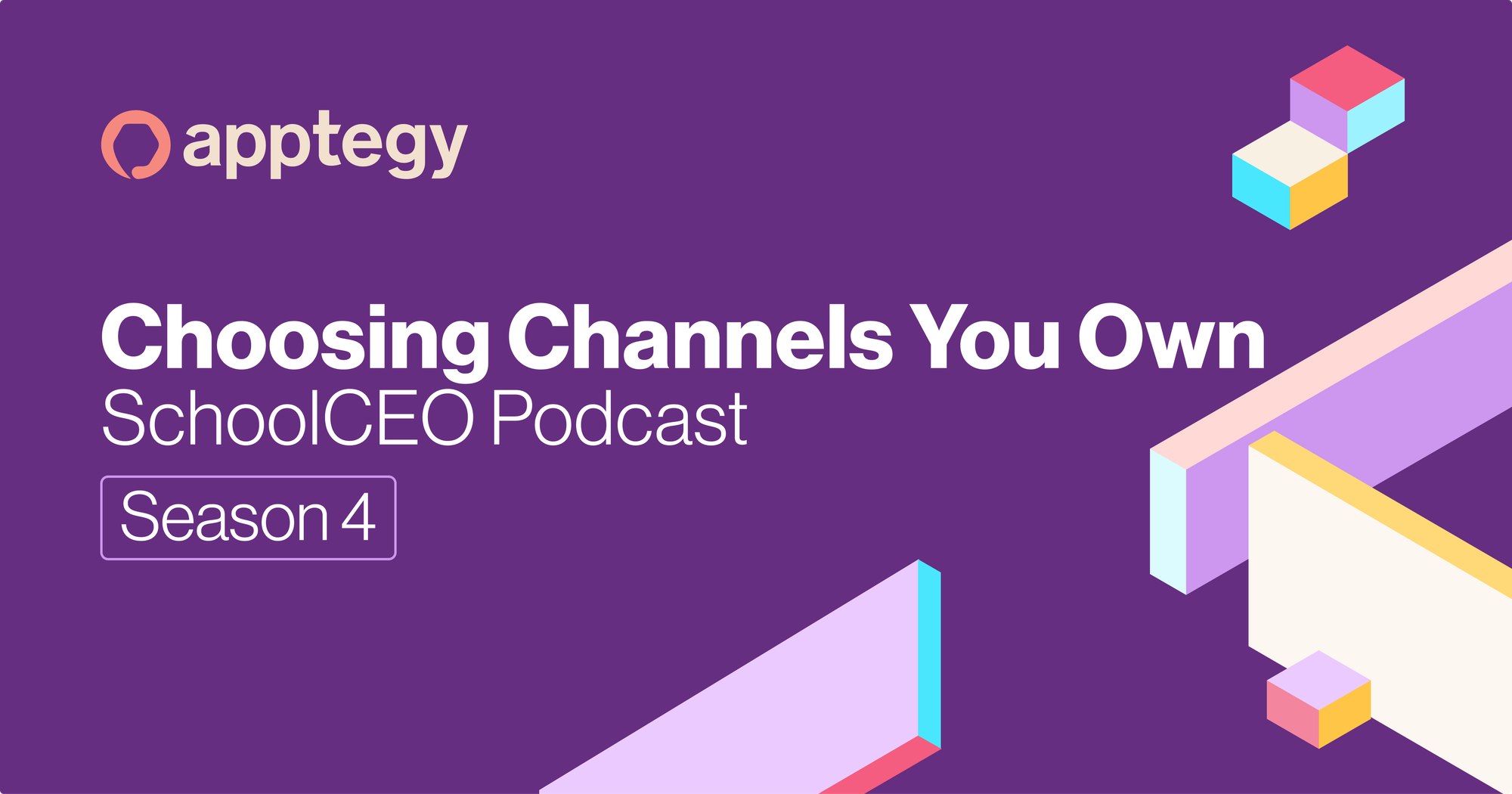Choosing Channels You Own
Today we discuss the next step for creating a long term communication strategy—choosing the right channels for the right audiences.

Show Notes
Read our findings on What Parents Want from their school or district communications.
Subscribe to our newsletter at https://www.schoolceo.com/subscribe-now/.
Visit us at schoolceo.com and connect with SchoolCEO on LinkedIn or X/Twitter @school_ceo.
If you have a story you’d like to share with the SchoolCEO team, email us at eileen@schoolceo.com or schedule a call.
SchoolCEO is powered by Apptegy, the maker of the leading K-12 communications and brand management platform.
Episode Transcript
Welcome to the SchoolCEO Podcast. I’m your host, Eileen Beard. It can be argued that every step we’ve covered so far in determining a long term communication strategy is just background work—it’s the research you do before you ever write anything down. But once you’ve thoroughly investigated your current communications to see what’s working and what isn’t, you’ve gathered feedback from stakeholders for the same reason, and you’ve segmented those stakeholders to target their wants and needs, it’s time to actually start planning your plan. You probably walked into this with goals and objectives in mind, but now that you’ve done your research, it’s time to really nail those down.
Common district goals include increasing parent engagement, improving community support for school initiatives or building trust. Make these goals specific and measurable—for example, "increase parent attendance at school board meetings by 25%" rather than simply "improve engagement." Next, you have to choose your communication channels and create content guidelines and a content calendar for managing them. Today, let’s talk about the first part. Since we don’t have a direct line to every district’s audience, today we’re going to talk generally here about each of your major digital channel’s strengths.
And speaking of a direct line, let’s start with the media you own and control. In other words, these channels give you a direct line to your audience or audiences plural because you don’t have to rely on a third party app to communicate with them. And they don’t invite any outside noise, which helps prevent the spread of false information and negativity.
First and foremost, these media include your website and app. These channels serve as your digital headquarters. They should be user-friendly, updated often and—this is crucial—all other channels should lead back to them. Because ultimately, you want to gently train your stakeholders—most especially your parents and staff—to make those channels their primary source of information—no matter which subset they belong to or whatever other channels you’re using to communicate. If you have recruitment or enrollment goals, you also have to make sure your homepage links to info about them both.
Another platform you “own” is your newsletter, if you have one. SchoolCEO conducted our very own study to determine what parents want in terms of school communication. I highly recommend taking a look at it as you’re planning your own communication strategy. There’ll be a link to the study in the show notes. From it, we were surprised to learn that emails or newsletters were second behind websites for which channel parents first learn essential, but non-emergency information. Email newsletters also work well for sending detailed information to audiences. And you might need multiple newsletters—separate ones for families and staff, namely.
Texts, on the other hand, which form another direct line to your audience, were considered most helpful for time-sensitive information. Many of our respondents also wished they could sign up for reminder texts about their child’s upcoming events like you would receive from your dentist’s office or hair salon.
More and more districts are producing their own podcasts nowadays, too. Podcasts let you share longer-form content similar to that you might put in a newsletter, but they are easier for a lot of busy parents to consume because they can listen to them while they work out or on their drive to work. Which, I’ll bet, is where you’re listening to this podcast right now. I’ve heard from several districts that they are popular with older listeners, too, and are therefore great for community engagement goals. The trick is training your audience to use it if it’s new to your district. Link to it on your website, app, social media—wherever you reach people.
These aren’t groundbreaking observations, here. But the point is to prioritize your direct lines of communication when you’re developing a long term strategy. Your other lines of communication should complement and supplement the media you own, not usurp and overshadow it. All of your messages on all of your platforms should include a return address: your school or district web address.
Next up on the podcast, we’ll talk about the channels you don’t control: Social media. We’ll touch on each platform’s strengths and weaknesses and give you some suggestions for making content-sharing smarter, not harder.
Until then, thanks for joining me.

